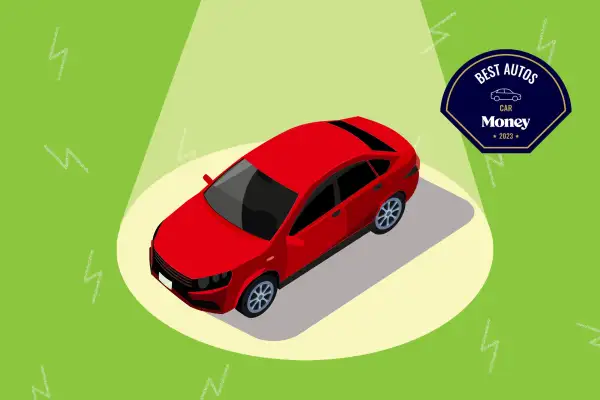The Best Electric Cars for 2023

Fast, fuel-efficient and eco-friendly, electric cars are no longer prohibitive in cost nor hobbled by limited battery range. Automakers have launched a host of new models that can travel more than 200 miles before needing to recharge. And as more EVs hit the market, prices are dropping.
Performance is also further improving, with EVs now offering even-quicker acceleration — and they were already faster off the mark than all but the sportiest of gas vehicles. And the absence of a gasoline engine makes EVs unequaled in quietness.
For all that, continued growing pains for EVs still mean these cars aren’t for everyone. The limited availability — and unreliability —of public charging locations remains an issue, especially if you don’t have the luxury of having a private garage in which you can install your own charger. And operating an electric car isn’t necessarily much, if any, cheaper than going with gasoline power; it depends on the relative cost of electricity and gas where you live.
We narrowed the growing fleet of available EVs to these five top picks, based on attributes such as value for money, features, performance and safety. The specs listed below each review are for the trim level we assessed, which was the one we judged to offer the best value. We list MPGe — the electric equivalent of how far the car runs on a gallon of gas — and the car’s range on a full charge of its battery.
Our Picks for the Best Electric Cars of 2023
Chevrolet Bolt — Best Overall and Best Value
Tesla Model 3 — Best for Features
BMW i4 — Best for Handling
Nissan Leaf — Best for Safety
Polestar 2 — Best for Technology
Reviews of the Best Electric Cars
Best Overall and Best Value: Chevrolet Bolt
Courtesy of Chevrolet
Pros- As affordable as comparable gas vehicles
- Decent cargo capacity for a subcompact
Cons- Small cabin
- As affordable as comparable gas vehicles
- Decent cargo capacity for a subcompact
- Small cabin
The Chevrolet Bolt EV stands out as probably the most affordable electric car available today. The electric car’s 1LT base model starts at $26,500, undercutting other EVs on this list by tens of thousands of dollars.
Though the Bolt is one of the smallest cars on the market today, its cargo space measures 17 cubic feet. That’s more room than the Tesla Model 3’s 15 cubic feet, but less than the Nissan Leaf’s 23.6-cubic-foot cargo hold. Folding down the Bolt’s rear seats bumps overall cargo space to 57 cubic feet.
The Bolt EV draws sufficient power from its 200-horsepower engine, reaching 60 mph in 6.5 seconds. The Tesla Model 3 takes 5.8 seconds to reach 60 mph with its 271-horsepower engine, while the Polestar 2 comes with a 231-horsepower engine and accelerates to 60 mph in 7 seconds.
- Price $26,500
- Mileage 120 MPGe
- Range per charge 259 miles
- More specs and model details
Best for Features: Tesla Model 3
Courtesy of Tesla
Pros- Rich in a range of features
- Fastest acceleration of this group
Cons- No Android Auto or Apple CarPlay support
- Rich in a range of features
- Fastest acceleration of this group
- No Android Auto or Apple CarPlay support
As the top-selling electric car on the market, the Tesla Model 3 features a spacious cabin trimmed with all-vegan materials, heated seats, a heated steering wheel and an expansive glass roof. The Model 3 is the only car in the segment besides the BMW i4 to come with a wireless charging pad and a massive 15-inch touch screen. The iPad-like display dwarfs every other contender on this list.
While you won’t find Apple CarPlay or Android Auto in the Model 3, this Tesla comes with options for automatic highway driving ($6,000), and full self-driving capability ($15,000) — features you won’t find anywhere else in the segment, although admittedly controversial ones.
The base Model 3 has a 272-mile range that bests the BMW i4’s 256-mile range and the Polestar 2’s 270 mile-range. Beyond the base Model 3, the Performance trim has a range of 315 miles and the Long Range trim boasts a 358-mile range.
- Price $42,990
- Mileage 132 MPGe
- Range per charge 272 miles
- More specs and model details
Best for Handling: BMW i4
Courtesy of BMW
Pros- Well-balanced ride
- Long list of features
Cons- High starting price
- Well-balanced ride
- Long list of features
- High starting price
The BMW i4 starts at $52,000 — almost $8,000 more than the Model 3, itself hardly the cheapest of EVs. The BMW’s price buys you a well-appointed interior with perforated leather upholstery and a 10.25-inch touch screen. It also gets you dynamic handling that approaches curves in classic BMW fashion while keeping the ride smooth, quiet and comfortable.
The eDrive35 base model produces 281 horsepower and jets from 0 to 60 mph in 5.8 seconds. It can travel up to 256 miles on a fully charged battery. That’s slightly less than the Tesla Model 3’s 272-mile range. The eDrive35 Gran Coupe, the newest addition to the i4 family, boasts a range of 256 miles.
- Price $52,000
- Mileage 109 MPGe
- Range per charge 256 miles
- More specs and model details
Best for Safety: Nissan Leaf
Courtesy of Nissan
Pros- A lot of features, especially given the price
- The most cargo space of the group
Cons- Small touch screen
- A lot of features, especially given the price
- The most cargo space of the group
- Small touch screen
As the longest-running EV in the segment, the Nissan Leaf stands out for its lengthy list of state-of-the-art safety and driver-assist features. Upgrade to the mid-tier SV Plus trim for advanced safety features including intelligent forward collision warning, a rear sonar system, intelligent blind spot intervention, automatic emergency braking with pedestrian detection and an intelligent around-view monitor.
The SV Plus also comes with ProPilot Assist, Nissan’s semi-autonomous highway driving system, which helps maneuver the Leaf using a predefined route on designated roadways. Tesla’s self-driving system has capabilities that extend beyond the highway, such as smart summon, self-park, and traffic light and stop sign control, which automatically slows your car to stop when enabled.
Where cargo space on the other EV picks run only to the teens in cubic space, the Nissan Leaf’s boasts a 23.6-cubic-foot cargo hold.
- Price $36,040
- Mileage 109 MPGe
- Range per charge 212 miles
- More specs and model details
Best for Technology: Polestar 2
Courtesy of Polestar
Pros- Lots of innovative technology
Cons- Limited cargo space
- Lots of innovative technology
- Limited cargo space
The Polestar 2 stands out for its panoply of cutting-edge technology. The cabin features an 11.2-inch center touch display with built-in Google — connecting the car directly to various apps and services. Using Google Assistant voice control, drivers can tell the Polestar what to do without taking their hands off the wheel.
The Polestar 2 employs technology that recognizes who you are by your key fob or smartphone and automatically adjusts the seats, mirrors, and steering to meet your preferences. Plus, it queues up your favorite playlist.
The Pilot pack offers similar safety assistance features found in competing EVs, like adaptive cruise control, blind spot information system with steer assist, and cross traffic alert with brake support. Yet, it also features specialty tech features like LED fog lights with cornering function and automatically dimmed door mirrors, which darken bright lights when driving at night.
This is not a top pick for those who need ample cargo capacity. The Polestar 2’s 14.3 cubic feet of cargo space is the smallest of the group.
- Price $48,400
- Mileage 107 MPGe
- Range per charge 270 miles
- More specs and model details
Jaclyn Trop is an award-winning journalist who road-tests and reviews vehicles, in addition to covering automotive news. Her byline has appeared in The New York Times, The New Yorker, Fortune, Consumer Reports and U.S. News & World Report, among other publications.

